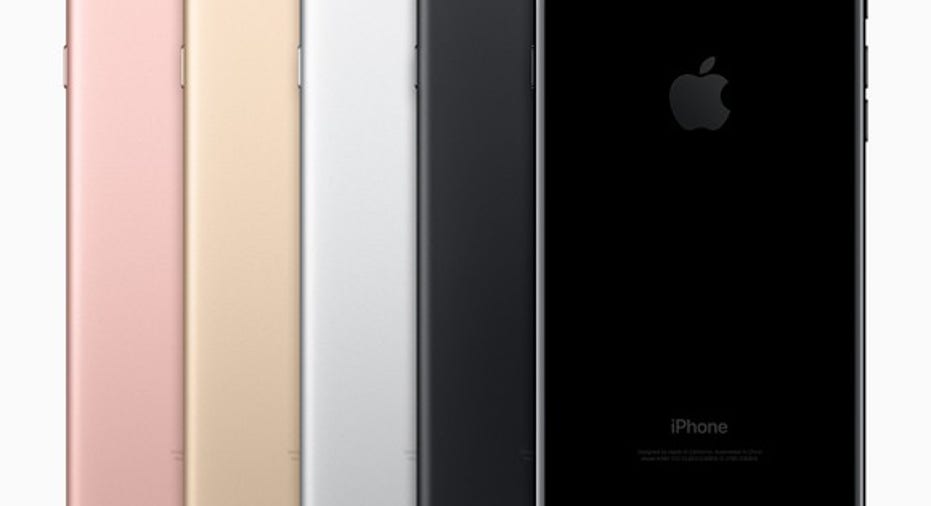Ignore the iPhone Doom and Gloom Reports

Apple (NASDAQ: AAPL) faced more than its fair share of gloomy prognostications during 2016. It's true that the company posted its first annual earnings decline in over a decade last year, but Apple still performed well overall, generating more than $45 billion in net income in fiscal 2016.
Japanese financial publication Nikkei Asian Review couldn't resist getting in one more dig at Apple before 2016 was over. It ran an "exclusive" story just before New Year's Day claiming that Apple would cut iPhone production by 10% year over year in the coming quarter. The report said that despite prior production cuts, demand for the iPhone 7 continued to miss expectations.
The dreary predictions about iPhone demand trends continue. Image source: The Motley Fool.
However, this dour picture isn't supported whatsoever by the available data on iPhone usage. In fact, adoption trends for Apple's newest iPhones suggest that the iPhone 7 and iPhone 7 Plus -- especially the latter -- have sold very well.
Nikkei has been pessimistic all along
The Nikkei Asian Review has been consistently bearish about the iPhone 7's prospects over the past year. Way back in May, it said that the iPhone 7 was dead on arrival due to a lack of innovation.
In August, it reported that there could be supply shortages for the new models, with component orders down 15% to 20% year over year. At that time, it maintained its conviction that demand would decline again relative to the iPhone 6s product cycle. An October article acknowledged that the iPhone 7 would sell better than expected a few months earlier, but still called for declining sales.
Usage data tells another story
If Nikkei Asian Review's sources were accurate, then iPhone sales should have declined on a year-over-year basis last quarter. That doesn't seem to the case, though.
On the last day of Apple's first fiscal quarter (Dec. 31), the iPhone 7 and iPhone 7 Plus together accounted for 12.2% of all iPhone usage, according to Fiksu. For comparison, the iPhone 6s and iPhone 6s Plus represented 12.5% of iPhone usage on the last day of the quarter a year earlier.
This might appear to imply that sales were down modestly year over year. However, the iPhone installed base probably grew by 15% to 20% over the past year. As a result, each percentage point of usage represents a larger number of iPhones.
Bearing this in mind, the Fiksu iPhone adoption figures point to a low double-digit increase in iPhone sales last quarter. Mixpanel -- another company that collects iPhone usage data -- estimates even stronger growth for the iPhone 7.
Usage data point to a return to iPhone sales growth last quarter. Image source: Apple.
It's important to note that these usage figures are a proxy for sales to end users. By contrast, Apple reports unit shipments, which also reflects changes in inventory at third-party retailers. A year ago, Apple significantly increased its channel inventory, leading to a painful inventory reduction later on. The company is working hard to avoid a repeat of that situation this year.
As a result, even if sell-through is up by double digits year over year, Apple will likely report a single-digit increase in iPhone shipments. On the plus side, the lower level of channel inventory this year will lead to higher shipments over the next two quarters, all else equal.
Apple could surge past modest investor expectations
In October, Apple projected that its total revenue would be up 0% to 3% year over year in Q1. Based on CEO Tim Cook's comments, Apple's ability to ramp up production of the iPhone 7 Plus to meet customer demand was a key variable that would impact the company's Q1 results.
After several months of short supply, Apple made big strides in catching up with demand for the iPhone 7 Plus during the last few weeks of the quarter. This may mean that iPhone 7 Plus output came in ahead of Apple's initial expectations. If so, Apple will probably blow past its revenue guidance range for Q1. The iPhone 7 Plus is also one of Apple's most profitable products, which bodes well for gross margin.
Right now, analysts on average expect revenue to increase just 2% year over year in Q1 -- well within Apple's guidance range -- and they are calling for EPS to decline on a year-over-year basis. The slew of negative media reports and weak supply-chain data appear to have depressed investors' expectations, even though actual usage trends tell a very different story.
Apple's iPhone lineup appears to have returned to growth last quarter. Considering that all of last summer's gloomy reports about iPhone production and sales turned out to be wrong, investors shouldn't put much stock in the latest negative headlines.
10 stocks we like better than Apple When investing geniuses David and Tom Gardner have a stock tip, it can pay to listen. After all, the newsletter they have run for over a decade, Motley Fool Stock Advisor, has tripled the market.*
David and Tom just revealed what they believe are the 10 best stocks for investors to buy right now... and Apple wasn't one of them! That's right -- they think these 10 stocks are even better buys.
Click here to learn about these picks!
*Stock Advisor returns as of January 4, 2017
Adam Levine-Weinberg is long January 2017 $85 calls on Apple and short January 2017 $110 calls on Apple. The Motley Fool owns shares of and recommends Apple. The Motley Fool is long January 2018 $90 calls on Apple and short January 2018 $95 calls on Apple. The Motley Fool has a disclosure policy.



















